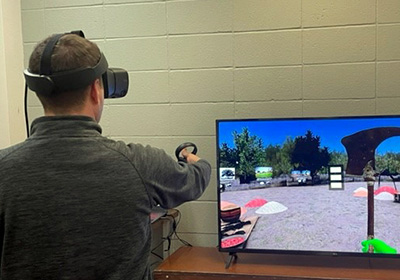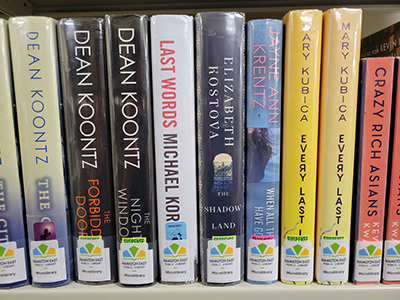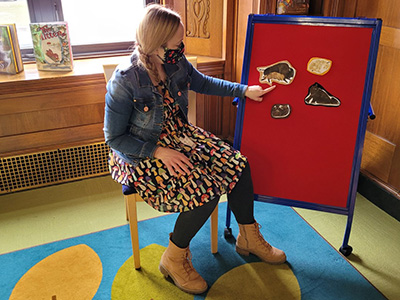Indiana State Library
315 W. Ohio Street
Indianapolis, IN 46202
United States
The Grants to States Program
The Grants to States Program is the largest grant program run by IMLS; it provides funds to State Library Administrative Agencies (SLAAs) using a population-based formula set by the law. SLAAs determine goals and objectives for the funds in their statutorily required five-year plan (see below). For more information, see the Grants to States program overview.
Allotments
| Year | Allotment Value |
|---|---|
| 2020 | $3,358,276.00 |
| 2021 | $3,388,738.00 |
| 2022 | $3,375,231.00 |
| 2023 | $3,609,501.00 |
| 2024 | $3,589,836.00 |
5 Year Plan
Each state creates a 5-year plan for its programs to strengthen the efficiency, reach, and effectiveness of library services. View all states' plans.
| Attachment | Size |
|---|---|
| indiana5yearplan.pdf | 344 KB |
5 Year Evaluation
At the end of a 5-year period, each state reports their results in achieving goals and objectives projected in their 5-Year Plan. View all states' evaluations.
| Attachment | Size |
|---|---|
| indiana5yearevaluation.pdf | 5.72 MB |
“The Indiana State Library is committed to providing high-quality and cost-effective statewide library services to all school, academic and public libraries, and the Hoosiers they serve. We will continue to be a national leader in the development of the library profession through relevant and highly-accessible learning opportunities, and a comprehensive librarian certification program. Additionally, our LSTA program will focus on providing library services to specialized populations not readily serviced by other libraries or programs within the state.”
-- Jacob Speer, Director and State Librarian, Indiana State Library
Project Examples

Funderburg Library, Manchester University: The Creation of a Virtual Experience of Northeastern Nigeria
Indiana University – Purdue University Indianapolis (IUPUI) partnered with Manchester University to create a Virtual Reality (VR) experience of northeastern Nigerian ethnographic art objects that are currently housed in Manchester’s Funderburg Library. In the early phase of the project, 30 Nigerian objects were 3D scanned to preserve and provide access to a portion of the collection that is currently in storage. Using the 3D objects, photographs, and oral histories of native Nigerian lands, IUPUI University Library and the Funderburg Library recreated a virtual location that has been destroyed by the Boca Haram. In addition to the VR experience, grant partners created a publicly accessible digital collection, which holds the 3D objects, photographic images, and video files used in the project.
IMLS Funds: $13,602.24

Microlibraries in Fishers and Noblesville
In response to a rapidly growing community, Hamilton East Public Library (HEPL) developed two microlibraries – small, focused collections of materials for partner locations in two underserved areas of the cities of Fishers and Noblesville. The aim was to reach audiences who do not, or cannot, frequent the main library buildings. Patrons checked out materials with their cell phones, and the library refreshed the collections every other month based on the community’s unique needs. These customized collections included bilingual and Spanish books for an organization serving many native Spanish speakers, and a pre-K collection for the sports complex with an onsite preschool. The microlibraries increased HEPL's connections with community organizations and visibility within the community.
IMLS Funds: $3,928

Indiana Children's Literacy Statewide Project
Through this project, the Indiana State Library (ISL) worked to sustain statewide support of early literacy initiatives in Indiana. ISL provided youth librarians statewide access to professional development opportunities such as in-person workshops and online, self-paced courses. ISL’s Children's Services Department loaned materials for storytimes and book clubs, as well as STEM, LEGO, and virtual reality kits, to Indiana public libraries. In addition, the Read-to-Me literacy program, a cooperative effort between the ISL and the state’s correctional facility libraries, gave incarcerated parents an opportunity to share the joys of reading with their children.
IMLS Funds: $131,390.67
Review recent Grants to States projects from this state library in the State Program Report database.
Search the Awarded Grants Database for additional details about awards in this state or view the State Details Dashboard.
Five-Year Plan Highlights
Goal 1: Information Access - The Indiana State Library will provide up-to-date, reliable access to information to meet the needs of all Indiana residents by utilizing effective technology, telecommunications, and resources.
- Projects include:
- Resource sharing, including discovery and interlibrary loan options
- Indiana Digital Library e-book collection
- INSPIRE statewide database service
- Indiana Memory digitization
- Indiana State Data Center
- Indiana Virtual Catalog
- Public awareness of LSTA-funded services
Goal 2: Institutional Capacity - The Indiana State Library will improve the capacity of libraries through professional development and leadership training opportunities and grants for technology.
- Projects include:
- Professional development and leadership training
- Technology subgrants
- Innovative subgrants
Goal 3: Enhanced Services - The Indiana State Library will aid libraries in improving services to Indiana residents, including services that support lifelong learning and human services.
- Projects include:
- Children’s literacy
- Taking Book and Braille Library
- State agency partnerships
IMLS Data Collection
State Library Administrative Agency Survey
The State Library Administrative Agency Survey (SLAA) provides descriptive data about state library agencies for all fifty states and the District of Columbia. To interact with the latest data, please visit the SLAA Survey Comparison Tool.
Public Libraries Survey
The Public Libraries Survey (PLS) provides national descriptive data on the status of public libraries in the United States and its territories. Explore state profiles representing more than 9,000 public library systems and over 17,000 public library outlets.